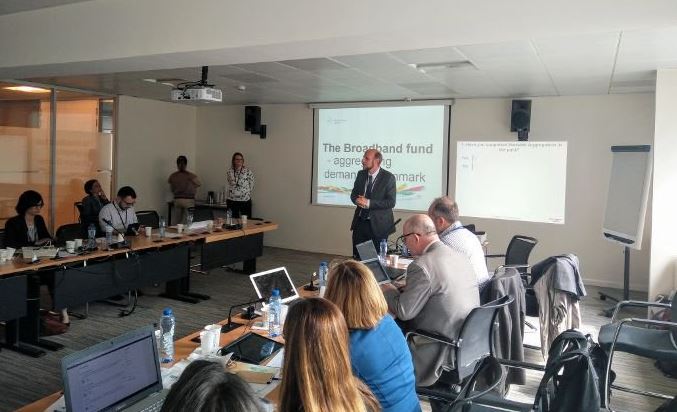The first thematic Group Meeting of the BCO network took place on 15 – 16 May 2017 in Brussels. White area mapping, cost reduction directive and demand aggregation were the main topics of the event, complemented by a field trip to northern France. Federal Broadband Bureau (Breitbandbüro des Bundes/aconium GmbH) as German BCO took active part in the discussions.
The BCO network will help the European Commission to identify problems in deployment of broadband infrastructure and in absorption of EU funds foreseen for broadband.
The objectives of the meeting were:
- to offer a common platform for discussion among BCOs,
- to share best practices and identify common challenges in the areas of discussion,
- to identify main areas of interest for future meetings and training sessions.
White Area Mapping
BCO discussed methodology and experience in data collection. Broadband mapping can be defined as the gathering and presentation of data related to the deployment of broadband. While there are certainly methodological differences between Member States– mapping initiatives typically apply comparable methods and that common practices are emerging. Accuracy of data is the issue.
One of the challenges of mapping exercises is the mapping of future investments, which also has an implication from the perspective of State Aid and the general need for public intervention. Under State Aid rules, broadband mapping is performed in order to identify which geographic areas can be covered by the support measures envisaged, depending on whether the areas can be qualified as white, grey or black from the perspective of basic or NGA broadband.
The European Broadband Mapping project, launched by the European Commission, will result in an interactive online mapping application that will aggregate and benchmark measurements of fixed and mobile broadband connectivity. All Member States of the EU and EEA will be covered. The database and online application will go live in late 2017.
Cost Reduction Directive
The BCOs looked at the implications of the cost reduction directive. The directive was implemented in most States by now. Yet the impact is to be analysed, as it is not feasible to isolate impact of the directive on the broadband deployment from other factors.
Cross-sectoral collaboration (e.g. between utility companies and telco) in broadband deployment faces important challenges, because the incentives for potential infrastructure access providers to collaborate are often not high.
The Cost Reduction Directive was introduced with the general objective of stimulating broadband investment and rollout throughout the EU, in line with the Digital Agenda targets. By reducing deployment costs, the measures would in particular enable deployment in areas where it would not be economically viable without such measures.
Demand Aggregation
Demand-side measures are implemented throughout Europe, e.g. in Denmark by the ICT infrastructure and policy unit of the Danish Energy Agency (BCO in DK). The Broadband Delivery UK presented examples of implementing voucher schemes. Although implementation of voucher schemes may be of interest for single or groups of users, it plays marginal role in the broadband rollout strategy of the UK.
Policies on demand aggregation are an example of a policy tool that may benefit both the demand and the supply side. Demand aggregation programmes combine potential consumers’ demand for broadband services to improve resource allocation. While this policy can raise the bargaining power on the demand side, it can also be used to guarantee profits on the supply side.

Fotocredit: aconium GmbH

